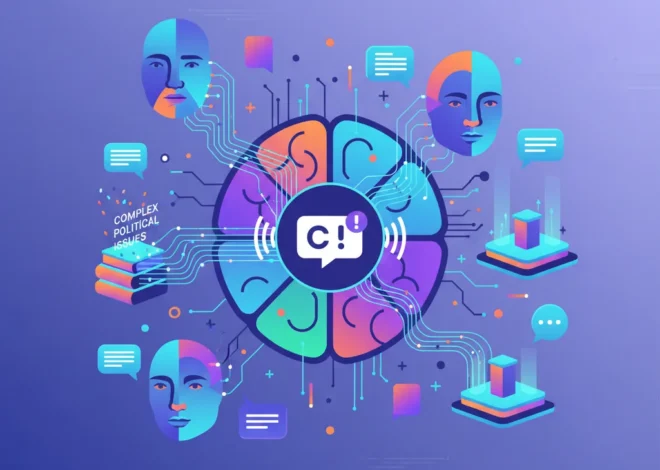
Shein’s Content Catastrophe: A Wake-Up Call for AI, Automation, and the Modern Tech Stack
It was a swift, decisive move that came only after a firestorm of public outrage. Fast-fashion behemoth Shein announced it had banned all sex dolls from its platform, scrubbing every related listing and image from its digital shelves. The controversy erupted over products that were described as “childlike,” sparking immediate and widespread condemnation. For many, the story ended there: a company made a mistake, faced backlash, and corrected course.
But for those of us in the tech industry—the developers, entrepreneurs, and leaders building the platforms that run the world—the story is just beginning. This isn’t merely a PR blunder or a failure of human judgment. It’s a glaring symptom of a much deeper issue: the immense, often-underestimated challenge of content moderation at an astronomical scale. It’s a case study in what happens when the velocity of growth outpaces the sophistication of the very systems designed to keep a platform safe.
How does a company valued in the tens of billions, a master of logistics and data-driven marketing, allow such a catastrophic oversight? The answer lies in the complex, fragile, and often-overwhelmed intersection of artificial intelligence, automation, and human accountability. Shein’s doll debacle is a sobering lesson for every startup and established tech firm about the profound responsibilities that come with operating in the digital world.
The Anatomy of a High-Speed Platform Failure
To understand how this happened, you first need to grasp the sheer scale of Shein’s operation. This isn’t your typical e-commerce store. Shein is a machine built for speed and volume, reportedly adding thousands of new stock-keeping units (SKUs) to its website every single day. One report from 2021 suggested it was adding between 700 and 1,000 new items daily. This relentless pace is central to its business model, but it creates an almost impossible content moderation problem.
Let’s break down a typical product onboarding pipeline in a high-volume marketplace:
- Seller Submission: A third-party seller (or an internal team) uploads product details: titles, descriptions, specifications, and images.
- Automated Ingestion: The data is fed into the platform’s backend systems, often powered by a flexible cloud infrastructure to handle the load.
- AI-Powered Screening: This is the first line of defense. Software using machine learning models scans the submission. Natural Language Processing (NLP) algorithms check text for banned keywords, while computer vision models analyze images for prohibited content (e.g., nudity, violence, counterfeit logos).
- Listing & Indexing: If the product passes the automated checks, it’s published and becomes visible to millions of customers.
- Reactive Moderation: The system then largely relies on user reports or manual spot-checks to catch items that slipped through the cracks.
Shein’s failure likely occurred at step three. The AI screeners, for all their sophistication, failed to understand the nuance and context of the problematic listings. The sellers may have used clever wording to bypass keyword filters, and the computer vision models may not have been trained to identify the specific, deeply problematic nature of the products. The system saw a “doll,” not a “prohibited doll.” This is a classic example of where pure automation falls short.
Digital Highways for Dirt Roads: How One Startup is Revolutionizing South Africa's Township Economy
The Double-Edged Sword: AI in Content Moderation
For platforms operating at this scale, using artificial intelligence for content moderation isn’t a choice; it’s a necessity. No army of human moderators could ever keep up with the firehose of content. The global market for content moderation solutions is exploding, projected to reach over $27 billion by 2030, largely driven by the adoption of AI and ML technologies.
But as the Shein case demonstrates, AI is not a silver bullet. It’s a powerful tool with significant limitations, especially when dealing with ambiguous, context-dependent, and sensitive issues. The core challenge is that AI models are only as good as the data they are trained on and the rules they are given.
Below is a comparison of common content moderation strategies, highlighting the trade-offs that companies like Shein must constantly navigate.
| Moderation Strategy | Pros | Cons | Best For |
|---|---|---|---|
| Pure Automation (AI/ML) | Incredibly fast, scalable, and low cost per item. | Lacks nuance and context; vulnerable to adversarial attacks; high rate of false positives/negatives. | Detecting clear-cut violations like spam, nudity, or specific banned keywords. |
| Purely Human Moderation | Excellent at understanding context, sarcasm, and complex policy violations. | Extremely slow, expensive, unscalable, and can lead to moderator burnout and trauma. | High-stakes content, final appeals, and training AI models. |
| Hybrid (AI + Human-in-the-Loop) | Combines the speed of AI with the accuracy of human judgment. AI handles the bulk and escalates edge cases. | More complex to implement and manage; still requires significant human resources. | Large-scale platforms dealing with sensitive and nuanced content (social media, e-commerce). |
Shein appears to have leaned too heavily on the first column. The “childlike” nature of the dolls is a subjective quality that is incredibly difficult to define in the binary logic of a programming script or a machine learning model. This is where a robust human-in-the-loop system becomes non-negotiable.
A Blueprint for a Resilient Moderation Stack
So, how can tech companies, from burgeoning startups to established giants, avoid a similar fate? It requires a multi-layered approach that treats trust and safety as a core engineering discipline, not an afterthought.
1. The Technology Layer: Smarter, Context-Aware AI
The foundation is still advanced software. This means moving beyond simple keyword filters and image classifiers. The future lies in multimodal AI systems that can analyze text, images, seller history, user reviews, and pricing data holistically to flag suspicious listings. For developers, this means focusing on more sophisticated machine learning models that can detect intent and context, not just content. This requires continuous investment in model training, A/B testing, and leveraging the scalability of the cloud to process vast datasets in near real-time.
2. The Human Layer: Empowering Moderators
Pure automation is a myth. The most effective systems use a “human-in-the-loop” model where AI acts as a powerful assistant, not a replacement, for human experts. The AI should handle the 95% of clear-cut cases (spam, duplicates, etc.), freeing up human moderators to focus on the 5% of complex, ambiguous, and high-risk content. This not only improves accuracy but also mitigates the psychological toll on moderators, a serious issue that has been well-documented at other major tech platforms (source). These teams need clear escalation paths, robust psychological support, and the authority to make critical policy decisions.
The AI Browser Wars: Is OpenAI's New Venture the Chrome Killer We've Been Waiting For?
3. The Policy & Process Layer: A Foundation of Clarity
Technology and people are useless without clear, comprehensive, and publicly stated policies. What exactly constitutes a “prohibited item”? The rules must be specific and unambiguous. This layer also includes robust cybersecurity measures and stringent seller vetting processes. Instead of allowing anyone to list items after a simple automated check, high-risk product categories should require enhanced verification. This proactive approach prevents bad actors from getting onto the platform in the first place, reducing the downstream moderation burden.
The Broader Implications: Beyond a Single News Cycle
Shein’s crisis is a microcosm of a much larger debate about platform responsibility. For years, many online marketplaces and social media platforms have operated under the premise that they are neutral conduits for third-party content. But that argument is wearing thin with regulators and the public.
This incident underscores that at a certain scale, you are no longer just a platform; you are a curator, whether you want to be or not. The choices your algorithms make have real-world consequences. This failure represents a significant erosion of brand trust, which is far more costly and difficult to rebuild than a flawed image recognition model.
However, within this challenge lies a massive opportunity for innovation. The next generation of e-commerce and social platforms will be defined by their ability to build and maintain trust. This opens the door for:
- New SaaS Startups: Companies specializing in ethical AI, advanced content moderation tools, and risk management solutions for online platforms.
- Advancements in AI Ethics: A greater focus on developing AI that is not only powerful but also fair, transparent, and aligned with human values.
- A Shift in Engineering Culture: Prioritizing “Trust & Safety” as a core engineering vertical, on par with backend, frontend, and DevOps.
The AI Superpower Showdown: Is China Poised to Overtake the US?
The Shein story is a potent reminder that the code we write and the systems we build are not isolated from society. The drive for frictionless, automated scale, if not tempered by ethical considerations and robust human oversight, will inevitably lead to damaging and dangerous failures. For every tech professional, the takeaway is clear: the most important feature you can build is trust. And that’s one thing that can’t be fully automated.


